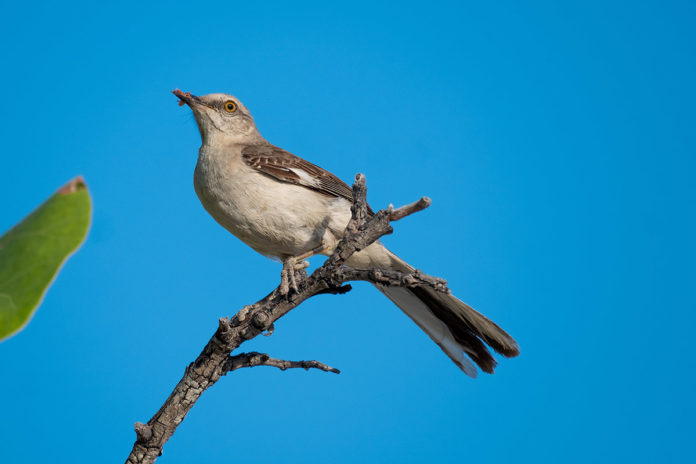What should the Florida state bird be? – Nan From The Block
Oh, man, I have opinions on this. Currently Florida’s state bird is the northern mockingbird. And while it’s a damn fine species, nothing about it is particularly Floridian. Its range spreads across 38 of the lower 48 states. Plus the northern mockingbird is also the state bird for Arkansas, Mississippi, Tennessee and Texas.
It seems pretty daft to have the same state bird as four other states. Especially when there are so many candidates that make more sense. The American flamingo would be a great state bird, as they are already synonymous with the state of Florida. The argument against them is that, until recently, they were officially considered extirpated from the state, and there actually aren’t that many of them, and none is known to have bred here for over well a century.
The roseate spoonbill, Florida’s other pink bird, also would be a great candidate. There is a decent population of them in Florida, and who doesn’t love a spoonbill? I mean, there are people put off by the fact that its beak is shaped like an implement designed to eat cereal or soup, and the species does occur in the four other Gulf Coast states, but other than that it’s a great candidate. And no one else has chosen it as a state bird.
There is a strong case to be made that a state bird should be one you can’t see anywhere else. And here in Florida, we currently only have one recognized endemic species – the Florida scrub-jay. Scrub-jays are friendly, curious birds, not particularly afraid of humans – they will sometimes land on your head for fun – and not inclined to wander more than a few miles away from where they were hatched. Their name comes from their extremely limited habitat – sandy xeromorphic shrub communities dominated by several species of diminutive oak trees, a.k.a. scrub habitat. But the chamber of commerce types, they don’t want no scrubs. Scrub jays are birds that can’t get no love from the legislature. It’s the name, which they think is unattractive. (As if a bird named for teasing and laughing at people in a scornful way is somehow better.)
Also, there is the fact that the species is threatened, largely because most of their habitat has been converted into orange groves or housing tracts, which highlights Florida’s less-than-great record of protecting its wildlife.
I am far from the only person who thinks the northern mockingbird is not really well suited to the state bird role. And there have been efforts to change it.
In 1999 10,000 school children signed a petition asking that the Florida state bird be changed to the Florida scrub-jay. And an attempt to change it was made in the legislature, but the bill failed, largely due to the efforts of highly powerful National Rifle Association lobbyist Marion Hammer, who believed that since scrub-jays would occasionally take a peanut from someone’s hand, they were lazy and suffered from a “welfare mentality.” (I am not making that up.)
In 2009 the Florida Fish and Wildlife Conservation Commission surveyed 77,000 school kids and asked them what they thought the state bird should be. The clear winner was the osprey, with 20,000 votes. Efforts were made in the 2009 and 2010 to change the state bird to the osprey in the legislature, but both efforts failed, largely due to the efforts of Hammer.
In 2021 two bills were proposed – one to rescind the northern mockingbird’s state bird status, and one to name the Florida scrub-jay to the role. Both were proposed, indefinitely postponed, then died in committee. Hammer again led the charge.
I guess Florida scrub-jay would be my choice. But I’d be good with osprey or roseate spoonbill. Anything but the deeply uninspired choice of northern mockingbird. Not that I expect the folks in Tallahassee to embrace the will of the people over the influence of lobbyists any time soon.
Do birds see me when I wave to them? – The Aptly Named Joy
I mean, probably. Depends on the species. Hawks, definitely. From very far away. They could read your text messages from across a parking lot if they could read. So they would definitely see you wave. Songbirds like warblers and such could also see you, but you’d probably have to be closer. Sometimes I’ll be sitting very still on the back porch and a dove will come into the feeder and I’ll watch them for a while, then I’ll scratch my nose or something without thinking about it and the dove will take off in a panic. So doves would definitely see you wave.
The question is, what does a person waving, presumably from a non-threatening distance, mean to a bird? (This is one of the many questions that will probably never be answered by science because of the stingy incuriosity of the people who dole out research grants.) To us a wave is a gesture of goodwill, of acknowledging the presence of others, of saying a low-key hello. But to them? How would they sort the meaning of that from all the other crazy things we do? Or, maybe they do understand what it means, and they’re like me, and can never remember anyone’s name, at least not right off the bat. And they kind of feel like jerks about it, so they maybe sometimes pretend they didn’t see the wave just so they could avoid an awkward situation. Or maybe they just haven’t figured out they should wave back.
Either way, I think you should keep waving. There’s nothing wrong with waving (again, from a safe distance). The world could use a lot more people inclined to give a friendly wave.
Got a question about birds that you’re dying to ask? Ask the Bird Geek at mark@boneisland.com.


























